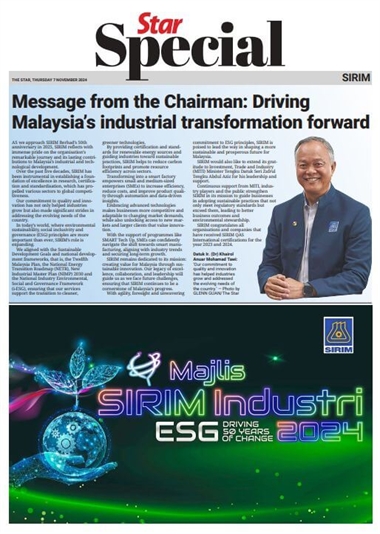
Different option: The BRICS’ objective is to diversify the world’s monetary system rather than simple de-dollarisation. — Agencies
THE pressure toward the diversification of world currency reserves is longstanding. It intensified after 2008, but has escalated since 2022. It is a prime topic in the next BRICS Summit that’s likely to further intensify the trend.
(BRICS refers to a group of fast-tracking economies: Brazil, Russia, India, China, and South Africa.)
In 2016, US Treasury Secretary Jack Lew cautioned that “the more we condition the use of the dollar and our financial system on adherence to US foreign policy, the more the risk of migration to other currencies and other financial systems in the medium-term grows”.
Both the administrations of former US president Donald Trump and current President Joe Biden have ignored Lew’s warning. One consequence has been the Global South’s rising interest in the BRICS, which will have its next, highly-anticipated summit in South Africa late this month.
A key topic in Johannesburg will be the BRICS quest to develop alternative payment systems to US dollar.
In May – oddly, amid the US banking crisis – American economist Paul Krugman attributed the “de-dollarisation” brouhaha to crypto-cultists and sympathisers of Russian President Vladimir Putin, as if the trend was nothing but a misguided anti-patriotic melee.
However, as Krugman noted, much of world trade remains invoiced and settled in US dollars; many banks based outside the United States offer dollar-denominated deposits; many non-US corporations borrow in dollars; central banks hold a large share of their reserves in dollar assets; and so on. The assumption was that, a bit like a diamond, the US dollar is forever. But in reality, no dominant reserve currency has had an indefinite lifespan.
When the dollar is weaponised by US foreign policy in the name of international community but without the broad support of international consensus, it puts trade invoicing and settlement, foreign corporates, financials, and central bank reserves at risk.
True, recently US Secretary of Treasury Janet Yellen said there’s still no alternative to the dollar- based monetary system. Then again, not so long ago, she also warned about a catastrophic scenario if Washington failed to agree on a new debt limit. Similarly, the British, too, touted the blessings of their sterling pound until 1914. But that primacy ended with the overstretch of the UK economy after 1945.
How are the BRICS contributing to diversification? Thanks to its organisational flexibility, the bloc makes possible unilateral, bilateral, and multilateral measures. Analytically, these range from gradual reforms to more unilateral individual measures. These, in turn, are driven by the original BRICS founder economies (Brazil, Russia, India and China), the new aspiring members, and the coalition partners who share its vision and are considering membership as well.
Some 22 countries have formally applied to join the group, while an equal number of states “have been informally asking about becoming BRICS members”, according to Anil Sooklal, South Africa’s ambassador-at- large responsible for ties with Asia and the BRICS. Reportedly, countries looking to join the bloc include Argentina, Iran, Saudi Arabia, and the United Arab Emirates.
Indeed, the rising number of populous and large emerging economies make possible the kind of “network effects” and “positive spillovers” that will be critical to launch the new critical infrastructure for the proposed alternative global financial system.
However, what the BRICS offer is not simple de-dollarisation. The goal is not to eliminate the dollar, which is typically the depiction by the critics and political adversaries of the BRICS, particularly in the West.
On the eve of the Ukraine conflict, American think tank Atlantic Council characterised Russia and China as “partners in de-dollarisation”. That, in turn, was portrayed as “an alternative to the US-dominated SWIFT” [the currently dominant payment system]. Touted widely in the West, the cooperation of Russia and China is understood as a de jure alliance, and de-dollarisation as a ploy for dollar substitution.
The realities are a bit less scandalous and more nuanced. The BRICS have little to do with rogue states seeking covertly to subvert international order. Rather, like asset managers who seek to maintain appropriate diversification in their portfolios, the BRICS’ strategic objective is diversify and recalibrate rather than simple de-dollarisation.
The sceptics say that the dollar has been buried many times before. Why should it die this time? But who says it would have to die. The more, the merrier. Most BRICS economies still rely significantly on the US dollar, whereas those that have been sanctioned by the US and/or its allies have significantly reduced their dollar reserves, often opting for gold instead.
What the major BRIC economies seek is a more diversified global currency regime. The present path is untenable. If it is not remedied gradually and over time, it will change through a major world crisis, disruptively. The BRICS goal is not to replace the dollar. Rather, it is to diversify the monetary system so that it would better reflect today’s world economy.
Historically, it’s far from a new idea. British economist John Maynard Keynes made a similar argument for the proposed supranational currency bancor (the name was inspired by the French banque, “bank gold”) in Bretton Woods in 1944 (where 44 countries met to create an international monetary agreement standardising currency exchange rates).
But the idea was torpedoed by the US negotiators, who wanted to replace the UK pound with the dollar as the world’s major reserve currency. However, Keynes cautioned that the dollar primacy would result in great uncertainty and volatility following the reconstruction and recovery of Western Europe and other major economies.
That’s what ensued in 1971, when the US president Richard Nixon ended unilaterally the convertibility of the dollar to gold. Though introduced as a temporary measure, it made the US dollar a permanently floating fiat money. As gold no longer offered a yardstick for value, the perception of value replaced value itself. The consequent price shock reverberated across the world. With the twin oil crises, it was followed by the quadrupling of oil prices, then runaway inflation and stagflation, and eventually record-high US interest rates and massive rearmament drives.
In geopolitics, the United States has continued to lean on major Western economies and Japan, but in international economy it refused to renounce the exorbitant privilege. As a net consequence, the dollar monopoly contributed to asset bubbles in the 1980s, early 1990s, early 2000s and finally in 2008. Amid the Great Recession, China’s central bank governor Zhou Xiaochuan revived the idea and urged major Western economies to “reform the international monetary system”.
Great pledges were made in Brussels, Washington and Tokyo, but nothing much happened. Hence, the efforts at complementary development institutions and critical infrastructure, including the BRICS New Development Bank, the Asian Infrastructure Investment Bank, the Bridge and Road Initiative (under BRICS), and the quest for new currency arrangements.
The BRICS do not want to subvert the world order. Rather, they seek to foster one vis-à-vis diversification. Nonetheless, global currency arrangements must not just reflect the interests of Americans who account for 4.1% of the world population. It must also reflect the aspirations of the multipolar world economy in which global growth prospects are driven by the large emerging economies. – China Daily/Asia News Network
Dr Dan Steinbock is an internationally recognised strategist of the multipolar world and the founder of Difference Group. He has served at the India, China and America Institute (in the United States), Shanghai Institutes for International Studies (China) and the EU Centre (Singapore).










































